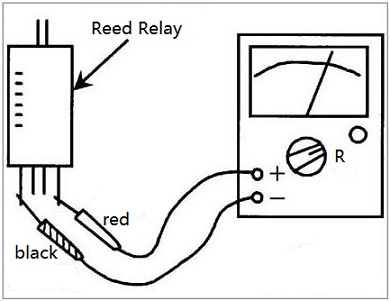
How to Test a Relay?
Troubleshooting SSR Relays
Testing SSR relays requires a digital multimeter (DMM). Start by checking the input and output voltages to ensure proper functioning. Then, evaluate the switching performance by applying a control signal and measuring the output. If the SSR relay does not switch, it may be faulty and needs replacement.
Troubleshooting Coil Relays
When troubleshooting coil relays, begin by testing the resistance of the coil using a multimeter. A significant deviation from the expected resistance value indicates a faulty coil. Additionally, inspect the contacts for continuity and proper connection. Replacement is necessary if any faults are detected.
Checking SSR Relays
To check SSR relays, apply a control signal to the input terminals and measure the output voltage with a multimeter. A functioning SSR relay should exhibit a change in output voltage when the control signal is applied.
Checking Coil Relays
When checking coil relays, apply power to the coil and verify that the contacts close properly. Measure the resistance across the contacts to ensure continuity. Any inconsistencies signal a malfunctioning relay that requires replacement.

DMM Testing
Testing Relay with Digital Multimeter
Testing relays with a digital multimeter (DMM) is essential for diagnosing issues accurately. For SSR relays, start by verifying input and output voltages and testing switching performance with a control signal. If the relay fails to switch, it may be defective. Coil relay troubleshooting involves checking coil resistance, contact continuity, and proper connection. Anomalies in resistance values or lack of continuity indicate relay malfunction. To test SSR relays, apply a control signal and measure output voltage changes. When checking coil relays, apply power, observe contact closure, and test for continuity across contacts. Any irregularities suggest a non-functioning relay in need of replacement.
Breaking News: Relay Troubleshooting Techniques
Stay updated with the latest relay troubleshooting methods, including using a DMM to test SSR and coil relays effectively. Master the art of diagnosing relay issues by conducting thorough tests to identify faults accurately. By following the recommended procedures and techniques, you can ensure the efficient functioning of relays in various applications. Count on reliable testing methods to pinpoint relay malfunctions promptly and replace faulty relays promptly to avoid downtime and equipment damage.

6 Minutes Read
Quick Tips for Relay Testing
– Use a digital multimeter (DMM) for accurate diagnosis of relay issues.- Verify input and output voltages for SSR relays to assess switching performance.- Test coil resistance, contact continuity, and connections for coil relays.- Irregularities in resistance values or lack of continuity indicate relay malfunction.- Apply a control signal to test SSR relays and observe output voltage changes.- Test coil relays by applying power, checking contact closure, and testing continuity across contacts.
Relay Testing in Detail
Testing relays with a DMM is crucial to identify faults accurately. For SSR relays, check input/output voltages and switching performance. Coil relay troubleshooting involves assessing coil resistance, contact continuity, and connections. Anomalies in resistance values or lack of continuity signal relay malfunction. Test SSR relays with a control signal and observe output voltage changes. When testing coil relays, apply power, observe contact closure, and test for continuity. Prompt identification of relay issues ensures efficient functioning and timely replacement to prevent downtime.

How To Test A Relay Using Multimeter & Battery?
Methodology for Testing Relays
– Utilize a digital multimeter (DMM) for precise diagnosis of relay problems. – Confirm input and output voltages in SSR relays to evaluate switching performance. – Evaluate coil resistance, contact continuity, and connections for coil relays. – Abnormalities in resistance values or continuity issues indicate relay malfunction. – Examine SSR relays by applying a control signal and monitoring output voltage changes. – Test coil relays by energizing, checking contact closure, and verifying connectivity across contacts.
Terminal Identification & Relay Operation
– Describing terminal identification and proper operation of the relay is essential for accurate testing. – Understanding the functions of different terminals aids in effective troubleshooting.